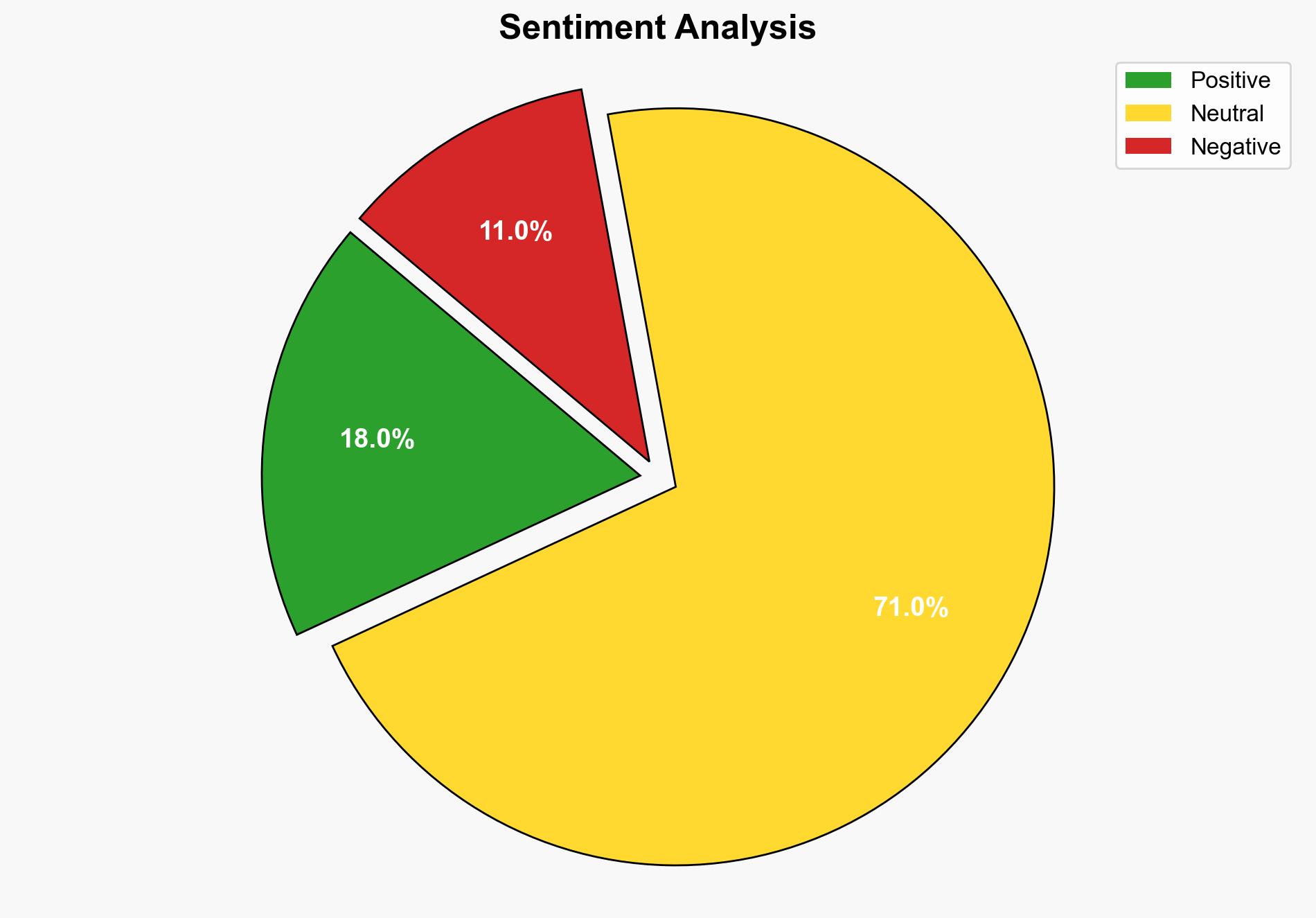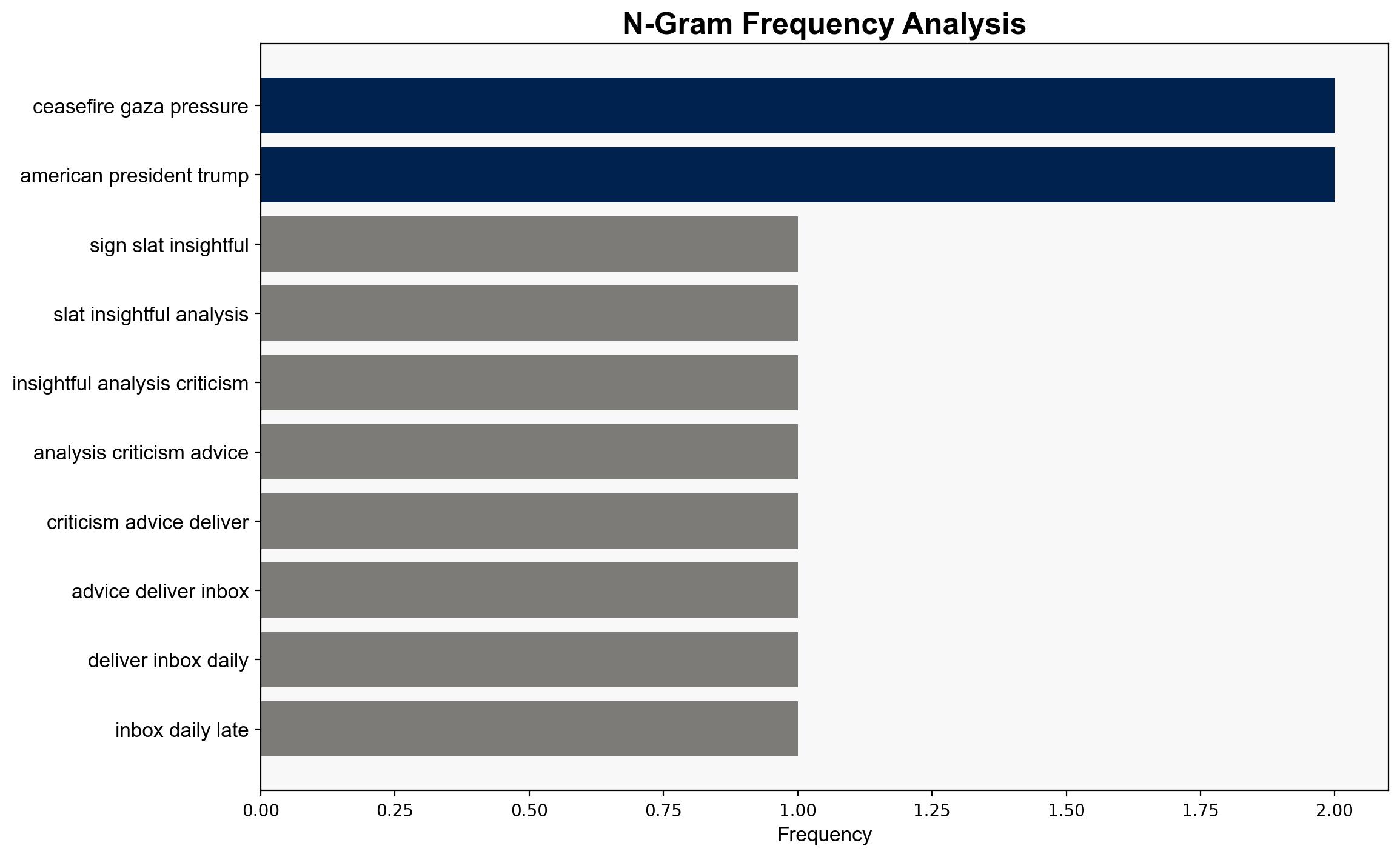Peace in Gaza May Now Unfortunately Come Down to Trump – Slate Magazine
Published on: 2025-11-03
Intelligence Report: Peace in Gaza May Now Unfortunately Come Down to Trump – Slate Magazine
1. BLUF (Bottom Line Up Front)
The most supported hypothesis suggests that Donald Trump’s involvement in the Gaza ceasefire is primarily driven by strategic interests in maintaining regional alliances and leveraging influence over key players. Confidence level: Moderate. Recommended action: Monitor developments closely, particularly Trump’s interactions with regional leaders, to anticipate shifts in the geopolitical landscape.
2. Competing Hypotheses
1. **Hypothesis A**: Trump’s involvement in the Gaza ceasefire is a calculated move to strengthen U.S. influence in the Middle East, leveraging relationships with Israel and Sunni Arab leaders to maintain regional stability.
2. **Hypothesis B**: Trump’s actions are primarily motivated by domestic political considerations, using foreign policy achievements to bolster his image and distract from internal challenges.
Using ACH 2.0, Hypothesis A is better supported due to the emphasis on strategic interactions with regional leaders and the broader geopolitical context. Hypothesis B lacks direct evidence linking domestic political gains to the actions described.
3. Key Assumptions and Red Flags
– **Assumptions**: It is assumed that regional leaders are responsive to U.S. pressure and that Trump’s personal relationships significantly influence diplomatic outcomes.
– **Red Flags**: The potential overestimation of Trump’s influence on Netanyahu and regional leaders. The lack of clarity on the internal dynamics within Hamas and other Palestinian factions.
– **Blind Spots**: Limited insight into the long-term sustainability of any ceasefire agreement and the internal political pressures within Israel and Palestine.
4. Implications and Strategic Risks
– **Geopolitical**: The ceasefire’s fragility could lead to renewed hostilities, affecting regional stability and U.S. interests.
– **Economic**: Prolonged conflict could disrupt regional trade routes and energy supplies.
– **Psychological**: Continued tensions may exacerbate anti-U.S. sentiments and radicalization.
– **Cascading Threats**: Failure to maintain peace could embolden extremist groups, leading to wider regional conflict.
5. Recommendations and Outlook
- Engage in proactive diplomacy to support the ceasefire and address underlying issues.
- Monitor regional leaders’ responses to U.S. initiatives to gauge shifts in alliances.
- Scenario Projections:
- Best: Sustainable peace agreement with broad regional support.
- Worst: Collapse of the ceasefire leading to widespread conflict.
- Most Likely: Periodic flare-ups with intermittent diplomatic interventions.
6. Key Individuals and Entities
– Donald Trump
– Benjamin Netanyahu
– Sunni Arab leaders (Qatar, Egypt, Saudi Arabia, Jordan, Turkey)
– Hamas leadership
7. Thematic Tags
national security threats, regional focus, Middle East diplomacy, geopolitical strategy





